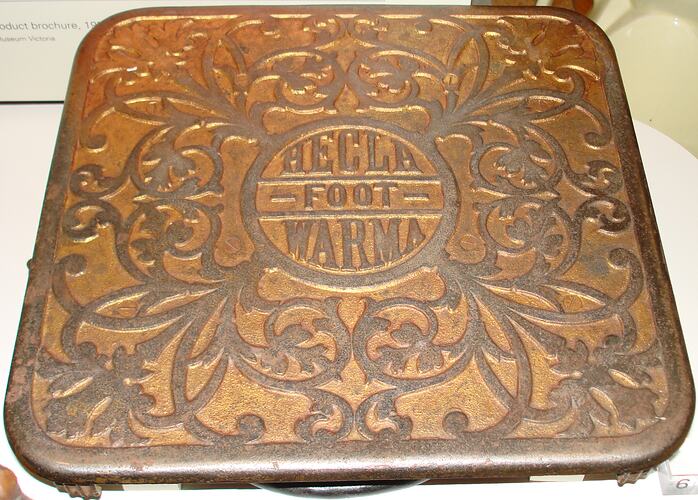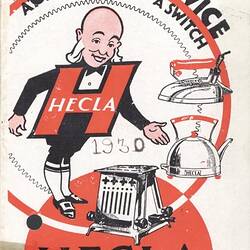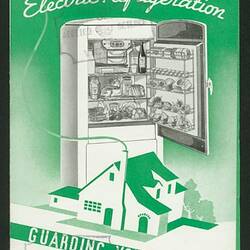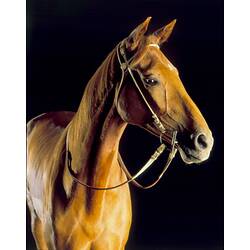Summary
Ornately patterned square cast-iron electric foot warmer, made in about 1927 by Hecla Electrics Pty Ltd and sold under the model name 'Foot Warma'. The foot warmer was made from the late 1920s until the 1950s and did not change substantially in design during this time. A postcard advertising the 'Foot Warma' accompanies this particular foot warmer.
The Hecla brand name and logo was registered in 1918 by Clarence Marriott. It was inspired by the recent eruption of Iceland's volcano Mt Heckla. Clarence and his father James were metal workers who had made Australia's first carbon filament electric radiators in 1899, and also built an early steam car.
As electricity use exploded in the 1920s and 1930s, 'Hecla' became a household name in Melbourne. They made a wide range of appliances for the home, and supplied commercial appliances to cafés, hospitals and offices. In 1927, the company shifted from small premises in the city to a bigger, electric-powered factory in South Yarra.
Hecla had no retail stores of its own - instead it sold products through wholesalers and retailers, including the State Electricity Commission (SEC). The company promoted its goods through advertisements in home magazines and displays in shop windows, home shows and the 1935 All-Electricity Exhibition. A popular advertising slogan in the 1930s was 'Hecla household helps make happy healthy housewives!'. Hecla ceased manufacturing in Melbourne in the 1980s.
Physical Description
Square, inclined and ornately patterned cast-iron foot plate with black power supply cord with black bakelite plug attached to the base through round bakelite fitting. Metal label on base of plate.
Significance
Hecla Electrics Pty Ltd were a significant Melbourne manufacturing company, who became a household name in the 1920s making small electric appliances such as heaters and kettles. They also made a variety of other electrical appliances for domestic, commercial and military use. The company manufactured electric appliances in Melbourne from about 1922 until the 1980s, although Clarence Marriott, who formed the company, had begun making radiators with his father James in 1899. The company had a reputation for quality products. The company also played an important role within the Australian domestic and commercial appliance industry, both as a leading innovator and through its role in training skilled staff, many of whom went on to work for competitors such as Kambrook, Electrolux and Sunbeam.
This electric coffee percolator represents the typical small domestic appliance that the Hecla company was famous for. Along with other items in the Hecla Collection, it highlights the diversity of electric appliances that the company made. This object also highlights the legacy of high quality design and metal construction work that Clarence and James established for the company, stemming from their early work as talented art metal workers. It also represents the first major period of the take-up of electricity use in the home. This take-up began in the 1920s and 1930s with the use of small appliances, and by the 1950s electricity had become commonplace in the home, and large appliances such as refrigerators and stoves became standard.
More Information
-
Collection Names
-
Collecting Areas
-
Acquisition Information
Donation from Mr Phil Wollen, 22 Oct 2004
-
Manufacturer
Hecla Electrics Pty Ltd, 696 Chapel Street, South Yarra, Greater Melbourne, Victoria, Australia, circa 1927
An accompanying postcard to this object has '1927' handwritten on the back, suggesting that the year of manufacture was 1927. The 'Footwarma' was in production from the late 1920s to about 1960, according to advertising material in the Hecla Collection. -
Inscriptions
Footwarma plate: HECLA / FOOT / WARMA Metal label plate verso: VOLTS 230 HECLA WATTS 80 / CAT. NO. 126 P.S.90 TYPE / MELBOURNE AUSTRALIA Power supply cord plug: RING GRIP / 250 V / MADE IN AUSTRALIA / 10 AMP
-
Brand Names
-
Classification
-
Category
-
Discipline
-
Type of item
-
Overall Dimensions
28.4 cm (Length), 30.3 cm (Width), 5.3 cm (Height)
Plate only.
-
Overall Dimensions
478 cm (Length)
Power supply cord.
-
References
Collection includes a significant amount of archival material.
-
Keywords



